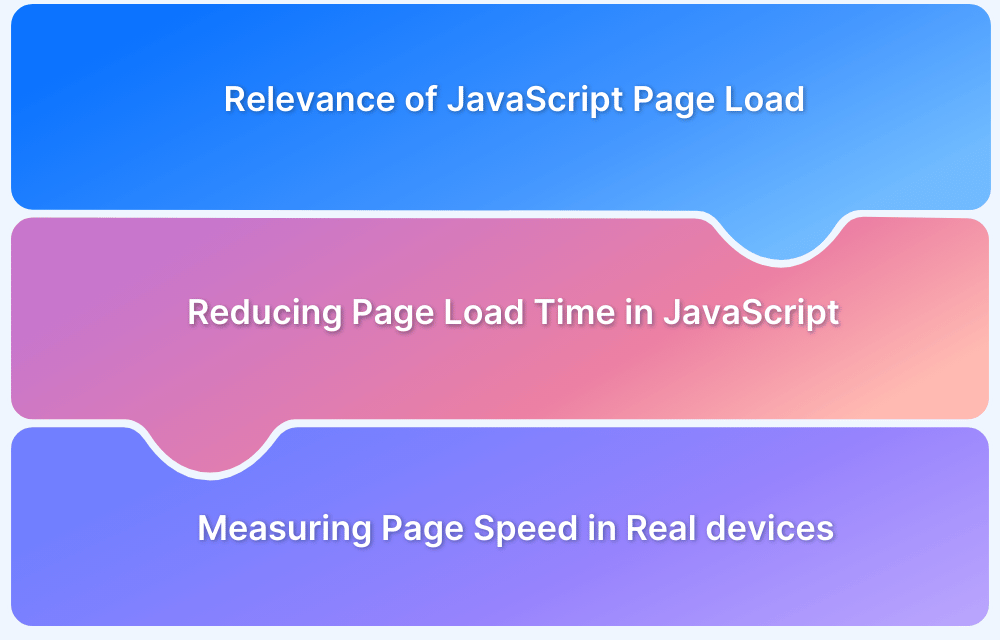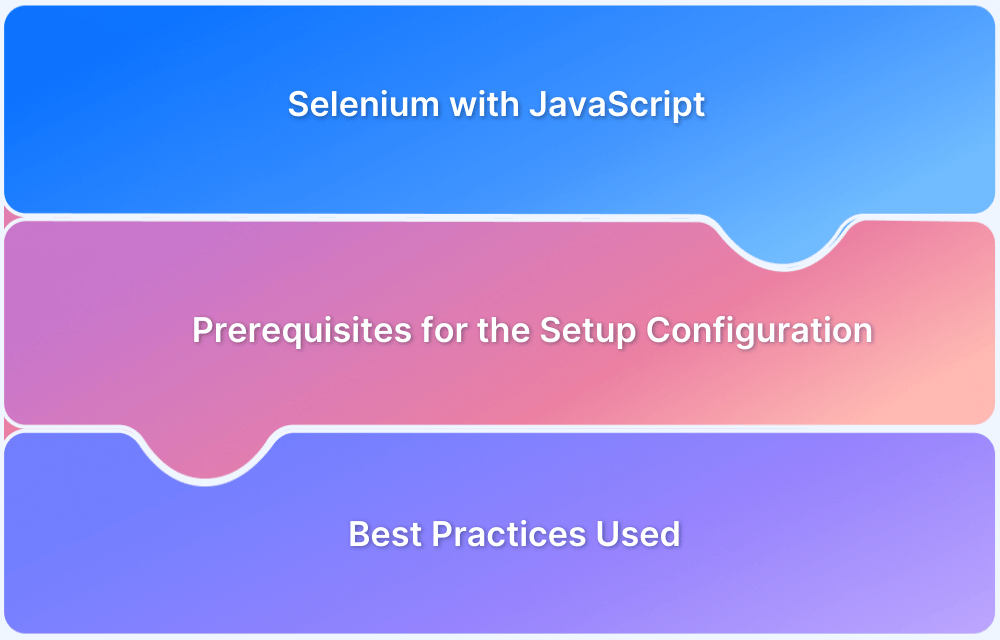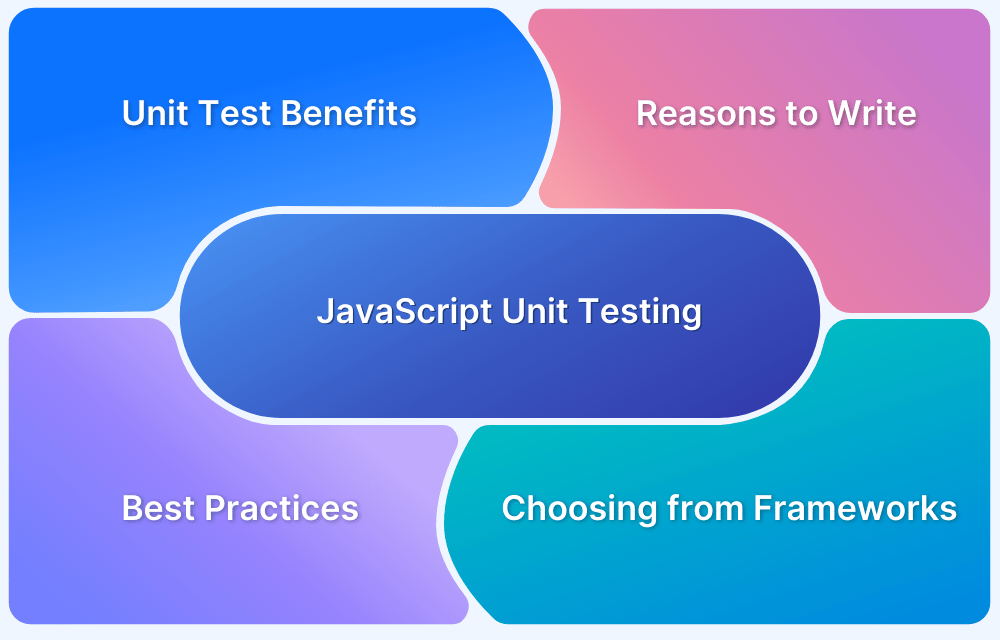Design patterns are reusable solutions for common coding problems. They help organize code efficiently and provide a shared language for developers.
Overview
JavaScript Design Pattern Categories
- Creational Design Pattern
- Structural Design Patterns
- Behavior Design Patterns
- Concurrency Design Patterns
- Architectural Design Patterns
- Blackboard Patterns
- Interpreter Patterns
- Broker Patterns
Benefits of JavaScript Design Pattern
- Improved Code Organization
- Eliminate the Requirement for Code Refactoring
- Reduce Codebase Size
- Reusability
- Better Maintainability
- Scalability
- Enhanced Collaboration
- Efficient Problem Solving
- Consistent Architecture
This article explains the top JavaScript design patterns with examples, guidelines to choose the relevant design pattern and best practices.
What are JavaScript Design Patterns?
JavaScript Design Patterns are reusable solutions to common programming problems that occur in software development. They provide structured and efficient ways to organize and manage code, to help developers build scalable, maintainable, and flexible applications.
Design patterns are not specific code implementations but rather general best practices that can be adapted to different situations.
These patterns are typically grouped into three main categories:
- Creational Patterns: Focus on object creation mechanisms (for example, Singleton, Factory).
- Structural Patterns: Deal with object composition and relationships (for example, Module, Decorator).
- Behavioral Patterns: Handle communication and responsibility between objects (for example, Observer, Strategy).
Using design patterns in JavaScript promotes cleaner architecture, reduces redundancy, and improves code readability and collaboration.
Benefits of JavaScript Design Patterns
Listed below are some of the benefits of Javascript design patterns:
- Expressive: Design patterns may elegantly describe a huge solution.
- Eliminate the Requirement for Code Refactoring: When an application is created using design patterns in consideration, you may not need to rewrite the code later since applying the relevant design pattern to a particular problem is usually an effective solution.
- Reduce Codebase Size: Patterns are typically beautiful and optimum solutions, so they need less coding than other solutions.
- Improved Code Organization: Patterns provide a structured way to organize and manage code.
- Reusability: Common solutions can be reused across different parts of the application.
- Better Maintainability: Clean and modular code is easier to update and debug.
- Scalability: Patterns support growth and complexity as applications expand.
- Enhanced Collaboration: Using standard patterns makes code easier to understand and work on as a team.
- Efficient Problem Solving: Patterns offer tried-and-tested approaches, reducing development time.
- Consistent Architecture: They help maintain uniform coding practices across the project.
Also Read: Top Javascript Testing Frameworks
JavaScript Design Pattern Categories with Examples
Creational, structural, and behavioral design patterns are the primary classifications for grouping Javascript design patterns. These are distinct from one another based on the degree of complexity, level of detail, and scope of application to the overall system under design. The below section details the categories of design patterns in javascript with examples.
1. Creational Design Pattern
Creational Design Pattern is one of the Javascript design patterns. As the name implies, it offers a framework for creating objects or classes that improve the adaptability and reuse of the current code. It is used to regulate how users interact with the classes so that the developers are spared from dealing with the intricate construction. The process of making objects is the focus of the creational design concept.
Examples of creational design patterns examples are listed below.
- Abstract Factory: Used to build objects without providing their concrete type.
- Builder: Used to build a complex thing from small objects using a step-by-step technique.
- Factory Method: Enables object creation without requiring a specific class name.
- Prototype: A prototype is a model used to build a new item from an existing one.
- Singleton: Used to create an example of an object once
2. Structural Design Patterns
The primary function of structural JS design patterns is to combine objects and classes into a more complex structure while ensuring that this structure is adaptable and practical. They play a crucial role in improving the code’s readability and ease of maintenance. Additionally, it makes sure that functions are appropriately divided and enclosed. It minimizes the contact between dependent items.
Some of the examples of Structural Design patterns are listed below.
- Adapter: By enclosing an interface around those existing classes, the adapter helps combine two incompatible types.
- Composite: It combines several objects into one.
- Bridge: This allows two components to work together with each other, while each has its own interface.
- Decorator: It dynamically and at runtime extends the behavior of the object.
- Facade: Provides a straightforward user interface for more intricate underlying components.
- Flyweight: It brings down the price of complicated object models.
- Proxy: It controls access to an underneath object by lowering costs, simplifying the setup, and providing a temporary interface.
3. Behavior Design Patterns
Design patterns for behavioral objects strongly emphasize the accountability and interaction of things. According to these design principles, the connections between the products’ exchange must be light while still permitting easy communication. Behavior design patterns govern the communication between classes.
Examples of behavioral design patterns are listed below.
- Chain of Responsibility: This represents the order of an object in a chain of processing.
- Command: It creates objects that contain the parameters’ actions.
- Interpreter: Defines grammatical representation of a particular language.
- Iterator: It progressively examines every component of an item without altering the representation underlying it.
- Mediator: Because it is the sole class with in-depth knowledge of the other classes’ existing methods, the mediator establishes a loose coupling between them.
- Memento: In Memento, an item is returned to its previous state.
- Observer: It makes it possible for various observer objects to view an event.
- State: When an object’s internal state changes, its behavior can be modified.
4. Concurrency Design Patterns
Concurrency patterns are JS design patterns that deal with the multi-threaded programming model. Concurrent processing in a single-core system is accomplished by a procedure known as context-switching. In a multi-core context, parallelism can be used to achieve coexistence.
Concurrency patterns are those categories of design patterns used in software engineering that address the multi-threaded programming model. An active object is one of the concepts in this group. A few examples of this group of patterns are as follows:
- Guarded suspension: Guarded suspension is used in concurrent programming to manage tasks that necessitate both a lock as well as a precondition to be met before the action can be done.
- Leaders/followers’ pattern: The Leader/Followers pattern offers a concurrency architecture in which many threads can de-multiplex events as well as dispatch event handlers that process shared I/O handles.
- Monitor Object: Another concurrent design pattern that aids in running multi-threaded systems is the monitor object pattern.
- Reactor pattern: The reactor design is an event management technique used to manage service requests given simultaneously to a service processor via one or more sources. The application handler then demultiplexes all incoming requests and sends them to the relevant request handlers synchronously.
- Read-write lock pattern: A read-write lock pattern is primitive for synchronization, addressing one of the readers’ writers’ difficulties. For read-only tasks, an RW lock permits concurrent access; write actions need exclusive access.
5. Architectural Design Patterns
An architectural model is a broad, reusable response to a typical issue in software design within a specific environment. The design patterns address various software engineering concerns, including high availability, business risk mitigation, and performance constraints of computer technology. Frameworks for software have incorporated some architectural practices.
Architectural design patterns in the javascript example include these:
- Peer-to-peer Pattern: A single machine serves as the client and server in a peer-to-peer architecture. Each system, also known as a peer, transmits requests to the network’s peers while also receiving and servicing recommendations from other network peers.
- Event-bus Pattern: An event bus is a JS design pattern that has the potential to streamline communication between various components. It is also known as publish/subscribe.
- Model-view-controller Pattern: According to the MVC (model-view-controller design pattern), an application must include a data model, display information, and necessary information. Each of them must be divided into independent items according to the pattern.
6. Blackboard Patterns
The blackboard pattern of JS is a behavioral design pattern in software engineering that offers a computational foundation for formulating and constructing systems that combine vast and diverse specialized modules and perform complicated, non-deterministic control techniques.
7. Interpreter Patterns
This pattern proposes establishing grammar and an interpreter that employs representations to allow the system to understand any given sentence of a language.
8. Broker Patterns
The broker design is an architectural paradigm for structuring distributed software systems containing separated components that communicate via remote procedure calls. A broker element is in charge of organizing communication, including forwarding requests and relaying findings and exceptions.
Guidelines to Select JavaScript Design Pattern
Here are some key guidelines to select the right JavaScript design pattern for your project:
1. Understand the Problem First: Clearly define the problem or requirement before choosing a pattern. Patterns should solve a specific type of problem, not add unnecessary complexity.
2. Consider Reusability and Maintainability: Choose patterns that promote code reuse and make your codebase easier to update and maintain over time.
3. Match Pattern Type to Use Case
- Use Creational patterns when you need controlled and flexible object creation.
- Use Structural patterns when managing relationships between components or modules.
- Use Behavioral patterns when defining how components communicate or handle responsibilities.
4. Keep It Simple and Practical: Don’t over-engineer. Apply patterns only when they provide real benefits. Simple solutions are often better than forcing a pattern unnecessarily.
5. Think About Scalability: Choose patterns that will scale well as your application grows in size and complexity.
6. Evaluate Performance Impact: Some patterns add abstraction layers. Make sure the trade-off between cleaner structure and runtime performance is justified.
7. Adapt to JavaScript’s Nature: Some classical patterns (from languages like Java or C++) may need to be adapted to JavaScript’s prototype-based, functional, and dynamic nature.
8. Consider Project Architecture: Align your design pattern choices with your overall architectural style, whether it’s modular, MVC, MVVM, or event-driven.
Best Practices for Implementing JavaScript Design Patterns
Here are some of the best practices for implementing JavaScript Design Patterns:
- Understand the Pattern’s Purpose: Use design patterns only when they address a real design problem.
- Keep Code Modular: Structure your code into small, reusable, and well-separated components.
- Follow JavaScript’s Strengths: Adapt patterns to JavaScript’s prototype-based and dynamic nature.
- Use Patterns Consistently: Apply patterns uniformly to ensure readability and maintainability.
- Combine Patterns When Needed: Blend patterns thoughtfully to handle complex scenarios more effectively.
- Write Clean and Readable Code: Keep implementations simple, clear, and well-documented.
- Optimize for Performance: Ensure that pattern usage does not negatively impact application speed.
- Refactor When Needed: Revisit and revise patterns as the application evolves.
- Avoid Over-Engineering: Don’t apply patterns unnecessarily and prefer simplicity when possible.
- Document the Pattern Usage: Maintain clear documentation to support team understanding and future updates.
Conclusion
Most extensive programs commonly employ design patterns, but it takes experience to recognize which one is preferable to another. Before developing any application, you should carefully consider each player and how individuals interact with others. After studying them, you need to recognize and apply the Prototype, Module, Observer, and Singleton designs.
The usage of design patterns by JavaScript developers is advantageous. Project maintainability and reducing extra effort in the development cycle are two important benefits of using design patterns. It is incorrect to assume that Js design patterns could replace developers even though they can offer solutions to complicated challenges, rapid development, and productivity.
BrowserStack supports JavaScript testing frameworks. Running automated testing on the BrowserStack device cloud saves time installing and maintaining device infrastructure. This will eventually result in a robust test framework that ensures higher testing coverage and a quality product for end customers.
While searching for testing platforms, selecting the one that integrates with your desired framework is critical. BrowserStack Automate, for instance, offers Javascript testing frameworks, making testing much easier and more efficient.






